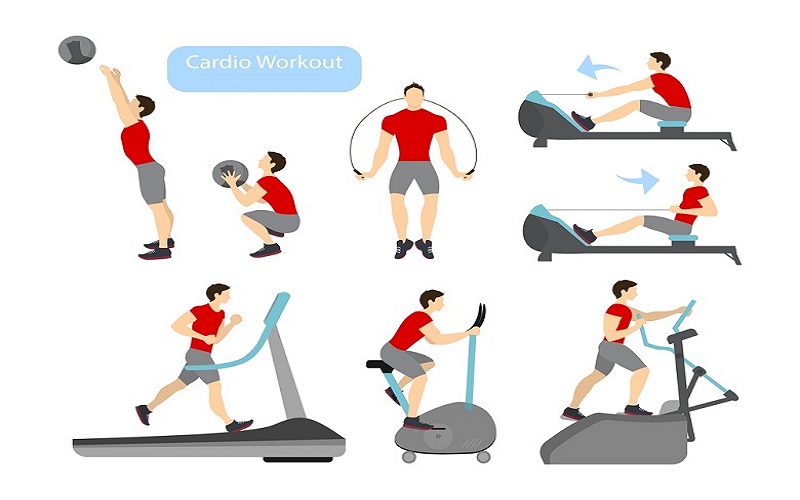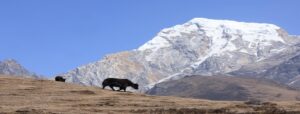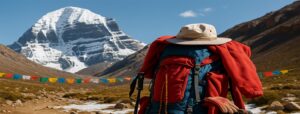The Everest Base Camp trek is a once-in-a-lifetime experience with challenges. High-altitude trekking, an average of 6-7 hours of walking, and steep trail climbing may be challenging. Therefore, preparation is key so you remain strong and never feel tired.
So, how do you prepare for the trek? Properly planned physical training for the Everest Base Camp trek will improve your strength, stamina, and energy and make the hike less tiring and more pleasant. This guide will give simple Everest Base Camp trek fitness tips to get you ready.
Why Physical Training is Crucial for the Everest Base Camp Trek
Trekking to Everest Base Camp is an exciting adventure, not just a long hike. It involves walking on steep trails, rocky paths, and high-altitude ground, where the air gets thinner. If you are not adequately prepared, even experienced hikers may struggle. That is why understanding the importance of training for the Everest Base Camp is the key to a successful and safe trek.
Before starting, it’s important to evaluate your fitness level. Consulting with a health expert or fitness coach can help you identify your weaknesses and strengths. This will help you set realistic goals and create a training plan that works for you, allowing you to acquire the physical endurance for Everest Base Camp.
A good training plan will constantly improve your fitness, combining strength exercises, cardio, and walking exercises. When you prepare right, the closest to feeling strong, ready, and able to enjoy an Everest Base Camp trek will be the actual realization.
Essential Training Routines for Everest Base Camp
Everest Base Camp trek exercise is a combination of training that makes you stronger, more endurance-based, and more flexible. Focusing on cardiovascular conditioning, strength training, and flexibility & mobility will have you in top physical shape to handle the demands of the trek. Let’s break down each of the significant training routines into smaller pieces so you can get yourself ready.
1. Cardiovascular Fitness
Cardio plays a key role in building your Everest Base Camp stamina. Your heart and lungs must be capable of performing well while trekking at high altitudes, so cardio for the Everest trek must be prioritized. Running, cycling, swimming, and brisk walking are some of the most effective Physical training for the Everest Base Camp trek that enhance cardiovascular functioning. Do a minimum of 3-4 cardio exercises per week, gradually increasing the duration and intensity. This will help you build up the stamina to manage big hiking days and reduce fatigue.

2. Strength Training
Strong muscles are essential for carrying a backpack, climbing steep hills, and navigating rough terrain on the Everest Base Camp trek. Strength exercises for the Everest trek should focus on the legs, core, and upper body. Movements like squats and lunges build powerful legs, while planks, Russian twists, and push-ups strengthen the core and upper body, improving posture and stability. Push-ups, in particular, are excellent for developing upper body strength to help manage your backpack over long distances. By incorporating comprehensive legwork for Everest Base Camp into your training routine, you’ll be better prepared to tackle the demanding physical challenges of the journey.
To get the most out of your Everest Base Camp strength training plan, include these exercises 2 to 3 times per week alongside your cardio routine. Training with added weight, such as a backpack or dumbbells, can also help simulate the trek and build functional strength. By regularly doing targeted strength workouts for Everest Base Camp, you’ll boost your stability, balance, and endurance, helping you feel stronger and more confident on the trail.

3. Flexibility & Mobility
Hours of hiking during high-altitude treks like the Everest Base Camp journey can put significant stress on your joints and muscles. That’s why flexibility is a vital part of physical training for the Everest Base Camp Trek. Maintaining flexibility helps reduce muscle stiffness, improve joint mobility, and prevent injuries throughout the trek. Yoga is one of the best ways to enhance flexibility and body awareness, while also supporting balance and stability on uneven terrain. To fully prepare for the demands of this high-altitude adventure, incorporate regular stretching, yoga poses, and dynamic mobility exercises into your Everest Base Camp fitness plan.
To fully prepare for the physical demands of trekking to Everest Base Camp, include regular stretching, yoga sessions, and dynamic mobility exercises in your weekly training routine. Aim for at least 20 to 30 minutes of flexibility or mobility work, 2 to 3 times per week. Stretch after every cardio or strength session, and add a full yoga session once or twice a week if possible. These habits will help your body recover faster, move more freely, and stay injury-free throughout your adventure.
4. Nutrition and Hydration during Training
The correct diet is essential to build the strength and stamina required to overcome the Everest Base Camp trek difficulty. A balanced diet rich in carbohydrates, proteins, and healthy fats supports endurance and aids muscle recovery, key components of Everest Base Camp trek fitness. Include whole grains, lean meats, nuts, fruits, and vegetables in your nutrition plan to stay strong and fit for the challenge ahead. Try to spread your meals across 3 main meals and 2–3 snacks daily to keep your energy levels stable during workouts and hikes.
Hydration is just as important, especially when training or trekking at high altitudes. Dehydration can lead to fatigue, muscle cramps, and altitude-related headaches. Make it a habit to drink 2.5 to 4 liters of water per day, increasing intake on days with intense physical activity. During long training sessions or hikes, consider adding electrolyte drinks to replace minerals lost through sweat. With proper nutrition and hydration, your body will be well-prepared to handle the physical demands of the Everest Base Camp trek and stay energized from start to end.

5. Mental Preparation for the Everest Base Camp Trek
The Everest Base Camp trek is as much a mental challenge as it is a physical one. Long days, tough trails, and high altitudes will test your patience. That’s why you need mental preparation for the Everest Base Camp trek. Positivity, breaking things into small goals, and visualization will keep you motivated.
Psychological preparation for the Everest Base Camp involves building emotional resilience and staying calm under pressure. Techniques like meditation, deep breathing exercises, and mindfulness can help you stay centered when things get tough. Surrounding yourself with positive people and celebrating small milestones, like reaching a new elevation or completing a long day, can boost your morale. A strong, positive mindset won’t just help you get through the hard days; it will also allow you to enjoy the journey and overcome any obstacle with confidence.

Everest Base Camp Trek: Fitness & Preparation Plan
Preparing for high-altitude adventures demands a balanced focus on physical conditioning, nutrition, hydration, and mental resilience. The following plan outlines key areas to target for optimal performance and safety.
| Focus | Purpose & Activities |
| Cardio | Prevent injury & improve mobilityYoga, stretching, and Mobility drills daily or post-workout |
| Strength | Power for climbing & load carryingSquats, Lunges, Push-ups, Step-ups 2–3× per week |
| Flexibility | Boost focus & mental resilienceMeditation, Visualization, Goal Setting, Daily or weekly check-ins |
| Nutrition | Fuel for energy & recoveryWhole grains, Lean protein, Veggies, Healthy, Consistent throughout the day |
| Hydration | Avoid fatigue, cramps & altitude sicknessWater, Electrolyte drinks, and Coconut water before, during & after workouts |
| Mindset | Boost focus & mental resilienceMeditation, Visualization, Goal Setting Daily or weekly check-ins |
Common Injuries and How to Prevent Them
The Everest Base Camp trek is a physical challenge, and without preparation, you can get injured. Blisters, knee pain, and altitude sickness are some of the most common injuries you can face while trekking to Everest. Precautions at the appropriate time will make sure that you are safe but still able to enjoy the journey.
Blisters are caused by friction and may be painful to walk on. To prevent injury during the Everest Base Camp, use well-fitting trekking boots, wear moisture-wicking socks, and keep your feet dry. Knee pain is also common due to the steep descents. Strength training, especially leg training, and trekking poles can reduce knee strain.
Altitude sickness is a risk at high altitudes. Preventing injuries on Everest Base Camp requires gradual acclimatization, hydration, and not going too high or too fast. Being sensitive to your body and taking the odd rest day will prevent complications. With the proper training, gear, and planning, you can minimize the risk of injuries and have a successful and rewarding trek.
| Injury | Details |
| Blisters | Cause: Friction from shoes or wet socks Symptoms: Painful, fluid-filled bumps Prevention: Moisture-wicking socks, dry feet, break-in boots |
| Knee Pain | Cause: Repetitive strain on descents Symptoms: Pain around the kneecap Prevention: Strengthen legs, trekking poles, and knee support |
| Altitude Sickness | Cause: Rapid altitude gain, low oxygen. Symptoms: Headache, nausea, dizziness Prevention: Acclimatize slowly, hydrate, and ascend gradually |
| Muscle Cramps | Cause: Dehydration, low electrolytes. Symptoms: Sudden, sharp leg pain. Prevention: Hydrate, stretch, and restore electrolytes |
| Lower Back Strain | Cause: Improperly carrying a heavy backpack. Symptoms: Back stiffness or pain. Prevention: Strengthen core, adjust pack, use hip belts |
How to Train with Limited Time or Resources
If you are too busy or don’t have a gym, you can still prepare for the Everest Base Camp trek through simple but effective exercises. Since there isn’t much time to train for Everest Base Camp, training needs to be directed towards strength- and endurance-improving exercises that don’t involve expensive equipment.
For quick training for the Everest trek, try home exercises like bodyweight squats, lunges, step-ups, and core exercises. Stair climbing and brisk walking with a loaded backpack can also be utilized to simulate trekking conditions. If possible, do short weekend treks to build endurance and acclimatize to uneven terrain.
You can be fit even without a gym if you are persistent. You can start your training without gym access through outdoor running, resistance band training, and yoga stretching. What is important is being active and wise in training so that you are physically fit to take on the challenge.

Simulating Trekking Conditions during Training
To prepare yourself for the Everest Base Camp trek, it’s essential to condition your body through effective physical training for the Everest Base Camp Trek program that simulates actual trekking conditions. One of the most effective methods is hiking with a backpack—gradually increasing the weight to help your body adapt to carrying your gear. This approach enhances both strength and endurance, preparing you for the extended days on the trail.
Another valuable component of training for high-altitude treks is stair climbing or incline walking. If you don’t have access to mountains, hill walking or using an inclined treadmill will help condition your legs for the constant elevation changes. Training in various weather conditions, such as heat and humidity, can also help your body adapt to Nepal’s unpredictable climate.
By acclimatizing to trekking conditions before your Everest journey, you’ll build stamina and mental resilience while getting accustomed to the physical demands of the trail. This type of focused Everest Base Camp physical preparation helps you feel more confident and capable on the trek, ultimately making the experience less exhausting and more enjoyable.
Benefits of Trekking Gear in Physical Training
Training with the best trekking gear for Everest Base Camp improves strength, endurance, and stability. Wearing and adapting your equipment before the hike guarantees comfort and lowers the possibility of trailside injuries.
Increasing the weight of your backpack helps your body adapt to carrying necessities across extended distances and increases endurance. Especially on steep ascents and descents, trekking poles help you stay balanced and lessen knee strain. During training, break in your hiking shoes to avoid blisters and pain, which will make the walk more pleasurable.
By using trekking gear for training, you can replicate actual hiking situations, enhance your coordination, and build your confidence for the trip. This realistic approach guarantees that you are prepared to face the challenge of Everest Base Camp, both psychologically and physically.

Building Mental Resilience for Long Treks
Trekking to Everest Base Camp is not just a physical challenge—it’s a mental one as well. Building mental toughness for the Everest trek is essential to overcoming fatigue, pain, and motivation slumps along the way. A positive mindset will allow you to push yourself through difficult moments and stay focused on your goal.
One of the best methods for developing mental resilience for trekking is to challenge yourself progressively with challenging conditions. Train in poor weather, trek for extended hours, and hike with a heavy pack to become accustomed to being uncomfortable. Deep breathing, meditation, or visualization practiced regularly can also help you stay calm and focused when the trek becomes challenging.
Staying positive and breaking the journey into small milestones makes preparing mentally for Everest Base Camp easier. Remind yourself why you’re doing this trek, celebrate small achievements, and lean on your trekking partners for motivation. With the right mindset, you’ll be able to handle the highs and lows of the journey and fully enjoy the adventure.
The Importance of Acclimatization and Its Effect on Training
Adequate acclimatization for the Everest trek is required to prevent altitude sickness and to enjoy a safe and pleasant journey. When you ascend higher, there is less oxygen, and it becomes harder for your body. Acclimatizing your body in advance can prove to be very helpful for you in the process of trekking.
Altitude training for Everest Base Camp helps your body adapt to lower oxygen levels by enhancing lung capacity and stamina. Hiking at higher altitudes before the trek, using altitude simulation masks, or performing cardio exercises that maximize oxygen efficiency can accomplish this. Slow and gradual ascents, water intake, and adequate rest during the trek also help avoid altitude sickness.
Understanding why acclimatization is crucial will help you prepare physically and mentally for the trek. By sensible training and allowing your body to acclimatize, you’ll reduce the risk of altitude sickness and improve overall trekking performance, making the journey to Everest Base Camp easier and more comfortable.

Conclusion
Getting ready for the Everest Base Camp trek isn’t just about packing your bags—it’s about building the right mindset, physical endurance, and acclimatization to handle the journey ahead. Physical training for the Everest Base Camp Trek is essential to boost your stamina and strength, making the trek smoother and more enjoyable.
Start training early, stay consistent, and trust the process. Every bit of effort you put in will pay off on the trail. If you need help with a training plan, gear recommendations, or expert tips to make your trek a success, connect with us via WhatsApp —We’re here to support you from preparation to the final steps of your trek!







